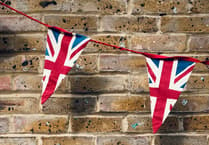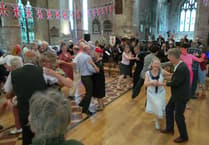For birds the nesting season is short and hectic. By now much of their song has subsided and by mid-June many birds have fledged their young and begun their annual moult.
High summer days are characterised by the song of only a few birds such as yellowhammers in the farmland around the forest edges and turtle doves in scrub and young plantations.
The purring song of the turtle dove is unmistakable. One evening recently Forest Enterprise held a meeting at which we were taken to Lea Bailey where the Forester's talk was accompanied almost non-stop by a turtle dove purring from some nearby Douglas fir.
But as the birds go quiet in June it gives more chance to watch other wildlife. The variety of butterflies in the Forest is outstanding. Of the 60 kinds of butterfly in Britain well over half can be seen in the Dean. It is one of summer's delights to walk along a woodland ride and see the many coloured butterflies dancing in the dappled sunlight.
The family of butterflies known as 'browns' are typical of mid-summer. Their caterpillars feed on grasses but they inhabit different stages of grasslands. One, the grayling, prefers very open areas where it can find bare ground or rock to bask on. On landing it will close its wings and turn towards the sun so that it casts no shadow making it hard to see. The old spoil heaps at Lightmoor are a well known site for grayling but I have seen it too in disused quarries up the Fetterhill near Parkend.
Another member of the brown family, though its appearance and name belie it is the marbled white. Its chequered pattern of brown and creamy white make it easy to identify and it always occupies rough grassland. It is one of the few butterflies that seems to be increasing and it is widespread in suitable places from Clearwell Meend in the west to Wigpool in the north east.
The apparently waste grassy areas that these butterflies live in are often very rich in insects and wildflowers, something that should always be considered when such areas come up for 'development' or 'improvement.'
Other 'browns' include the very numerous ringlet, the widespread meadow brown and the hedge brown or gatekeeper. This last one prefers a mixture of grassland and scrub where it often feeds at the nectar of bramble flowers.
Brambles are an excellent place to look for butterflies. Their blossoms will attract many butterflies including some of the true forest species. You might find the large and spectacular silver-washed fritillary or the uncommon white admiral feeding alongside the very common speckled wood which can be seen all through our woodlands from April to October.
Although butterflies will take nectar from many different flowers their caterpillars are much more choosy in their eating habits. The caterpillars of speckled wood feed on grasses. Those of the white admiral feed only on honeysuckle.
Caterpillars of the silver-washed fritillary have a start to their life that makes you wonder how they survive at all. The butterfly lays its eggs in the crevices of the bark of oak trees. When it hatches out in late summer, the new born caterpillar eats part of its egg shell then hibernates on the trunk of the tree.
On awakening in spring it crawls down the tree onto the woodland floor and has to find a violet plant, the leaves of which are the only food it will eat.




